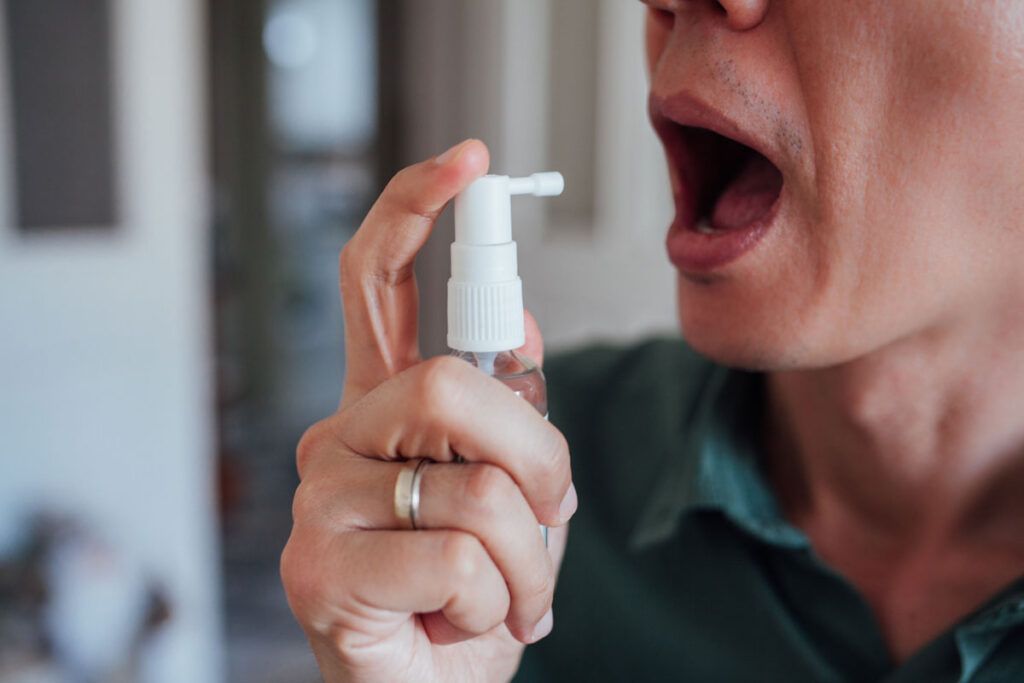Angina pectoris, or simply angina, is chest pain that occurs when the heart muscle doesn’t receive enough oxygen-rich blood.
To relieve the symptoms, healthcare professionals may prescribe a medication called nitroglycerin. This works in multiple ways to ensure blood flow and oxygen are effectively reaching the heart.
How does nitroglycerin work for angina?

The Food and Drug Administration (FDA) approves nitroglycerin (Nitrostat) to relieve angina symptoms.
An older 2015 review explains how it works:
- Vasodilation: Nitroglycerin relaxes the blood vessels and lowers blood pressure. This reduces the workload and oxygen needs of the heart.
- Better blood flow: Nitroglycerin increases blood flow by dilating the blood vessels. This delivers more oxygen to the heart.
- Platelet inhibition: Nitroglycerin prevents platelets in your blood from sticking together and forming clots that can worsen angina and cause heart attacks.
- Endothelial function: Nitroglycerin substitutes nitric oxide, a natural substance that protects blood vessel linings (known as the endothelium) and helps them dilate. People with coronary artery disease usually have impaired nitric oxide production.
You can take nitroglycerin before situations that may trigger angina, such as before exercise. You can also take it when you start to experience symptoms.
Nitroglycerin (Nitrostat) is fast-acting, with a half-life of only 2–3 minutes. A half-life is how long your body takes to remove half of the medication. Generally, the body completely removes medications within five half-lives, and for nitroglycerin, this is no more than 15 minutes.
Nitroglycerin types
Nitroglycerin (Nitrostat) is available in various forms, offering different administration options.
Nitroglycerin tablets
Nitroglycerin tablets act quickly, providing relief from angina episodes. You can also take them as a preventive measure if you expect angina — like before exercise.
The tablets are sublingual, meaning you place them under the tongue, where they quickly dissolve.
There are typically 4 doses available:
- 0.3 milligrams (mg)
- 0.4 mg
- 0.6 mg
- 0.8 mg
You take 1 dose every 5 minutes until you feel relief from your symptoms. However, you cannot take more than 3 doses. If 3 doses do not improve your angina, you should seek emergency medical attention.
Nitroglycerin spray
Like tablets, NitroMist offers quick relief during or before angina.
You administer the spray under the tongue for absorption into the bloodstream. It’s important not to inhale or swallow it.
You can get a spray bottle with 100 doses of:
- 0.3 mg
- 0.4 mg
- 0.6 mg
Like the tablets, you take one or two initial doses for symptom relief, but you should not take more than three doses within 15 minutes. If you still feel angina symptoms after this time, seek immediate medical care.
Intravenous (IV) nitroglycerin
According to a 2022 article, an emergency department can administer nitroglycerin through IV infusions.
They may do this if you visit the emergency room with angina and your pain does not improve with dissolvable nitroglycerin tablets or sprays.
In these cases, the medical professionals at the hospital will determine the correct dosage for your needs.
Nitroglycerin ointment
You can also get a 2% nitroglycerin ointment, Nitro-bid, to apply to the skin on your chest either before or during an angina episode. You can get different options, including:
- 30 gram (g) tube
- 60 g tube
- 48, 1 g packets
This option is most often preventive and can be useful if you find it difficult to take oral medications.
It can take 15–30 minutes for the ointment to take effect, with the full benefits being around 60 minutes.
This medication can last up to 7 hours.
Nitroglycerin patches
You can also get Nitro-Dur transdermal skin patches that release different nitroglycerin each hour. The strengths are:
- 0.1 milligrams per hour (mg/hr)
- 0.2 mg/hr
- 0.3 mg/hr
- 0.4 mg/hr
- 0.6 mg/hr
- 0.8 mg/hr
This approach may best suit angina prevention as it offers a more sustained release of the medication. Like the ointment, it may take longer than the oral tablets or sprays to start taking effect.
If you need help covering the cost of medications, the free Optum Perks Discount Card could help you save up to 80% on prescription drugs. Follow the links on drug names for savings on that medication, or search for a specific drug here.
